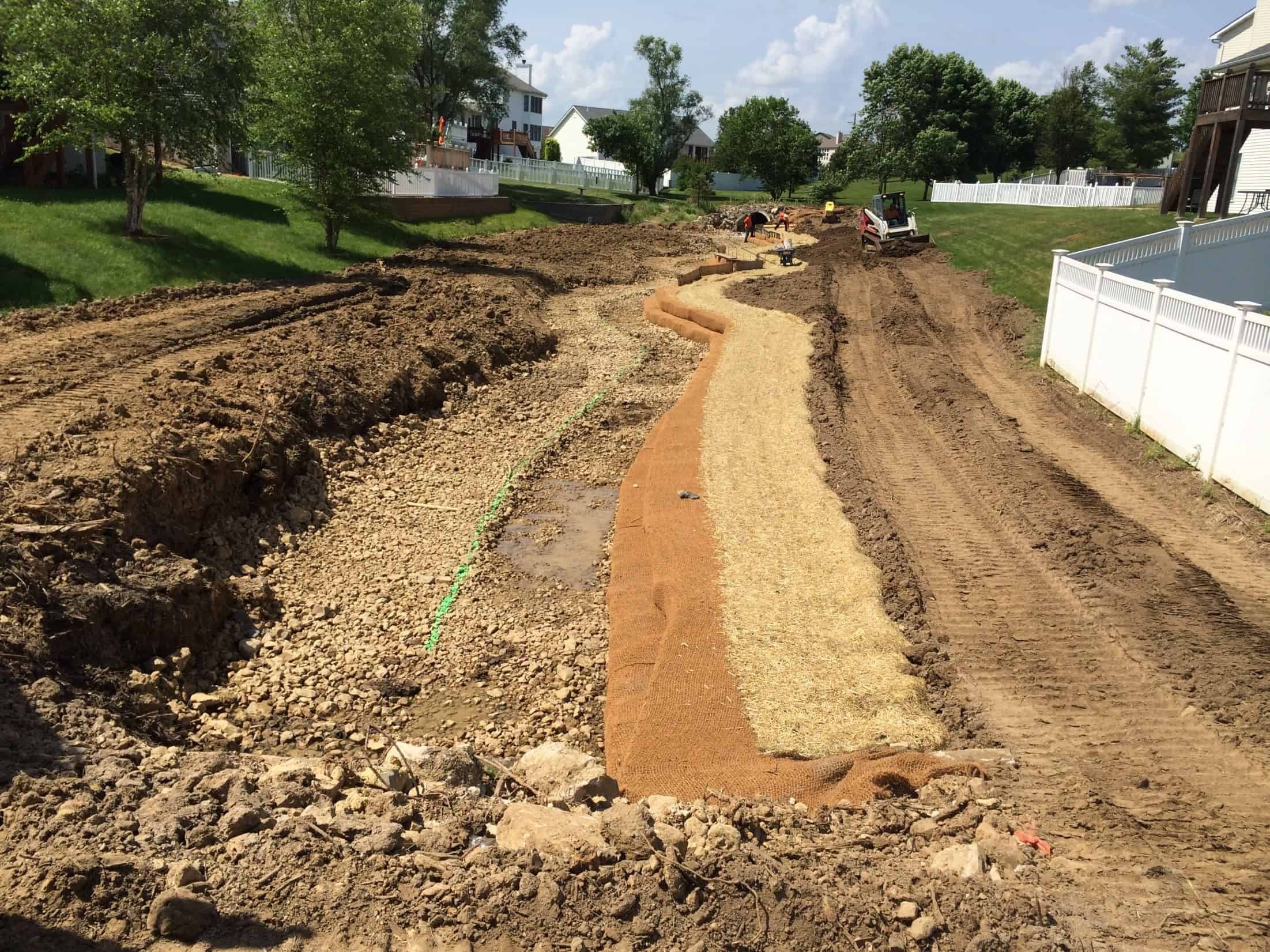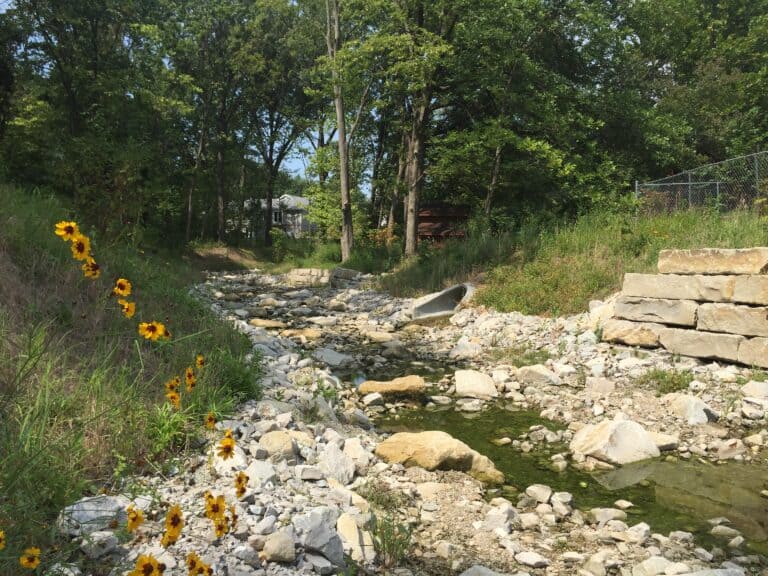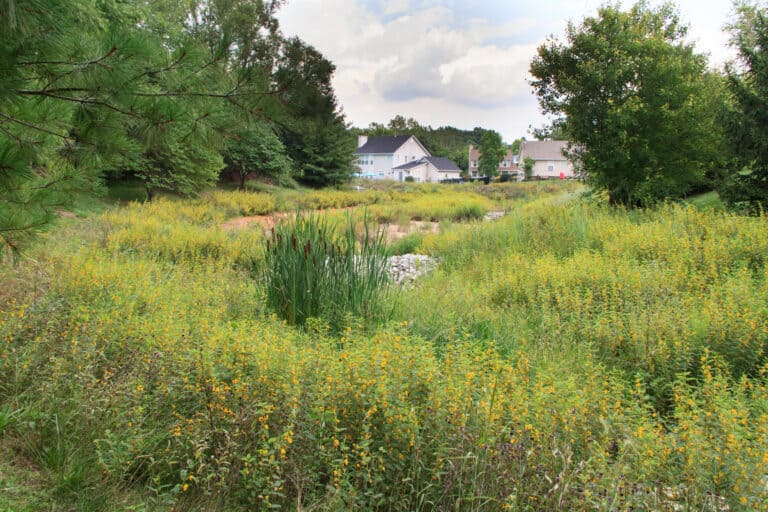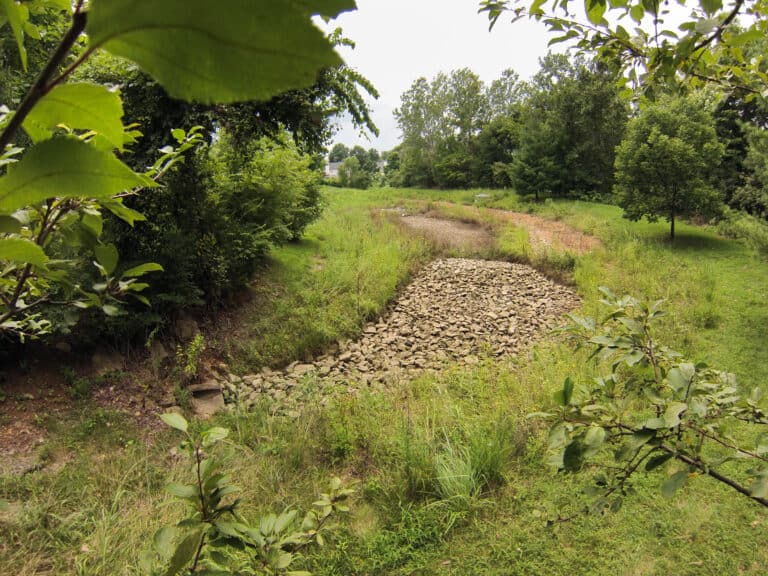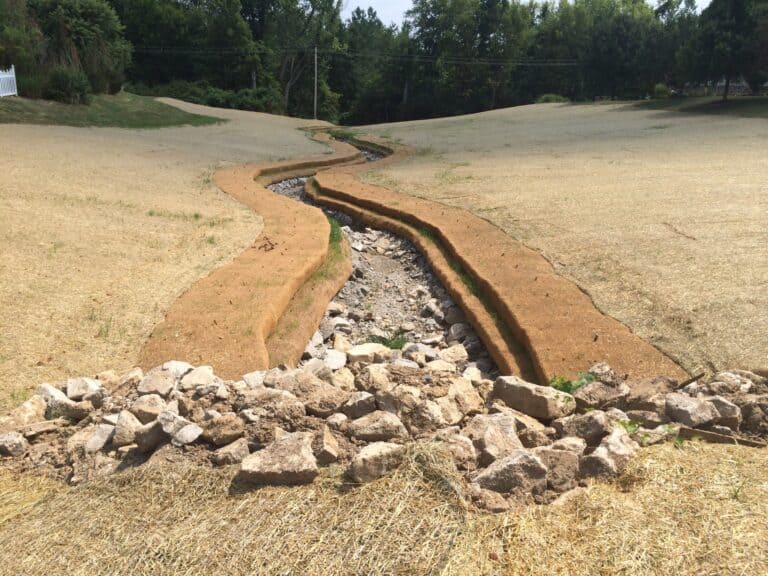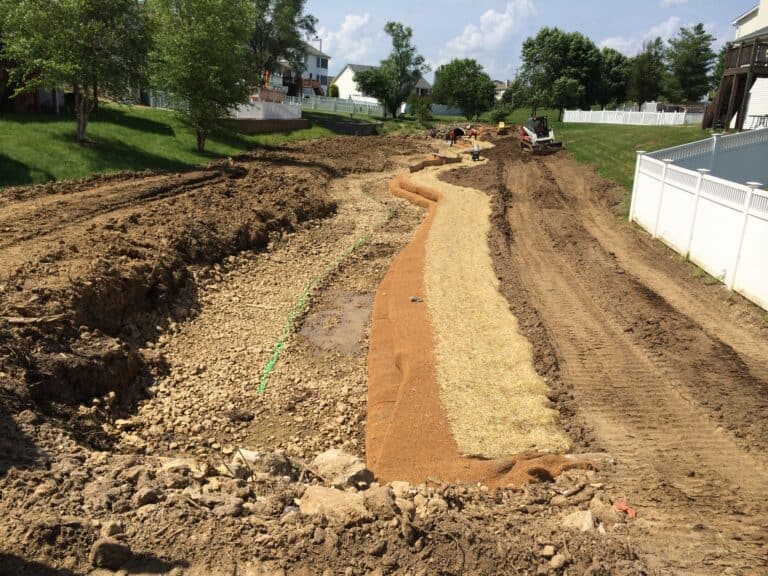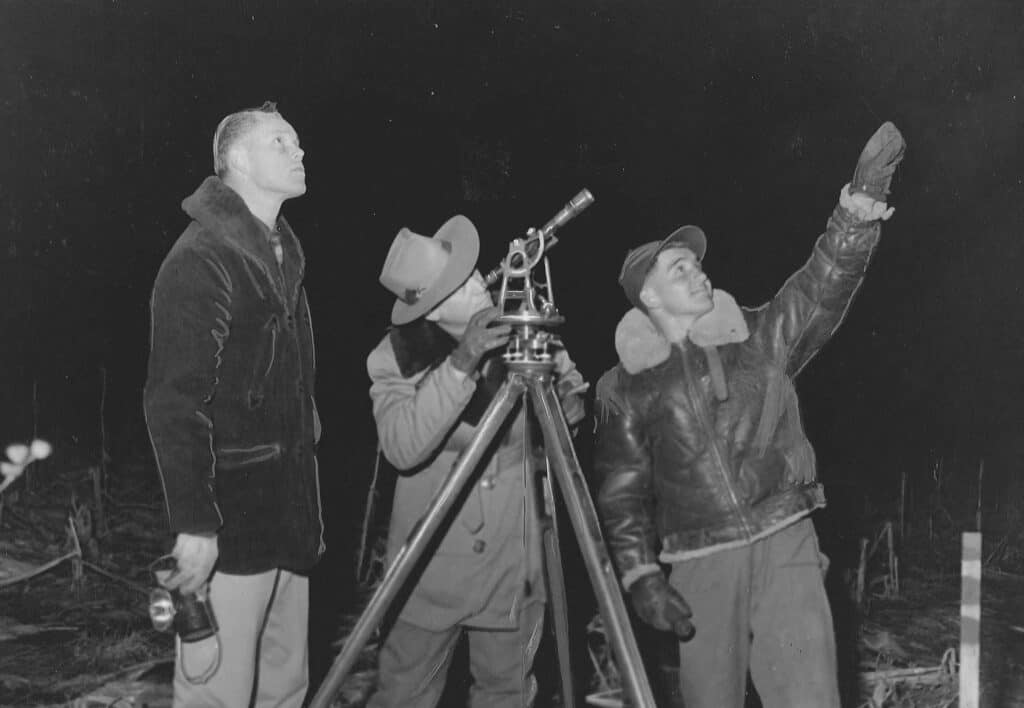To reduce property losses and pollution, while increasing water quality, the City of St. Peters, Missouri began a Comprehensive City-Wide Stormwater Management Program (SMP) in 2012. Water resources projects were aimed at preserving natural habitat, flood mitigation, creek bank stabilization, and detention basin rehabilitation/retrofit.
HR Green has completed numerous detention basin retrofits and stream stabilization/restoration projects in the past several years. Specific goals of the detention basin retrofits were to add features within existing footprints that will enhance water quality while maintaining performance to provide flood protection at least to the level provided by the original design.
Retrofit solutions include forebays and outlet works design, enhanced iron sand filtration, infiltration trenches, and the conversion of a traditional dry detention basin to an extended detention wetland. Specific goals of the stream restoration/bank stabilization projects were to create geomorphically stable channels under a range of flow conditions, improve water quality, improve aesthetics, create no impacts to flood conveyance, reduce future maintenance costs, and improve wildlife habitat. Natural solutions incorporated into these projects include the use of riffles, rock, and log step-pool systems for stable channels, and large woody debris and vegetated bioengineered banks for bank stabilization.
Deliverables for each project included a pre-design study with the development of alternate solutions. The preferred alternative was selected based on a constructability review, benefit/cost, and private property owner buy-in. Plans, specifications, and estimates (PS&Es) suitable for bidding and construction were prepared by HR Green. Additionally, HR Green provided limited construction phase services that included consultation, advice, and occasional construction observation.
